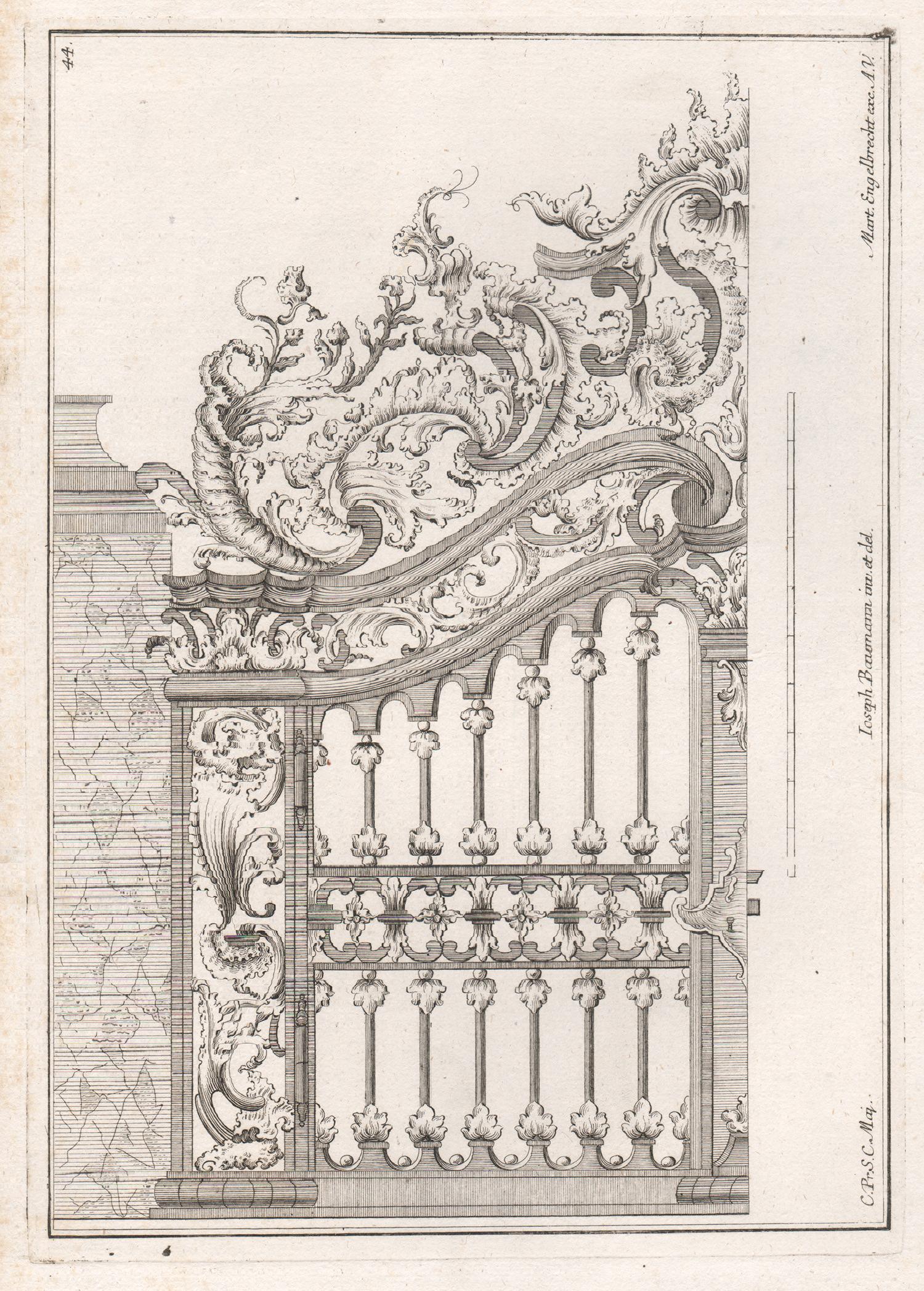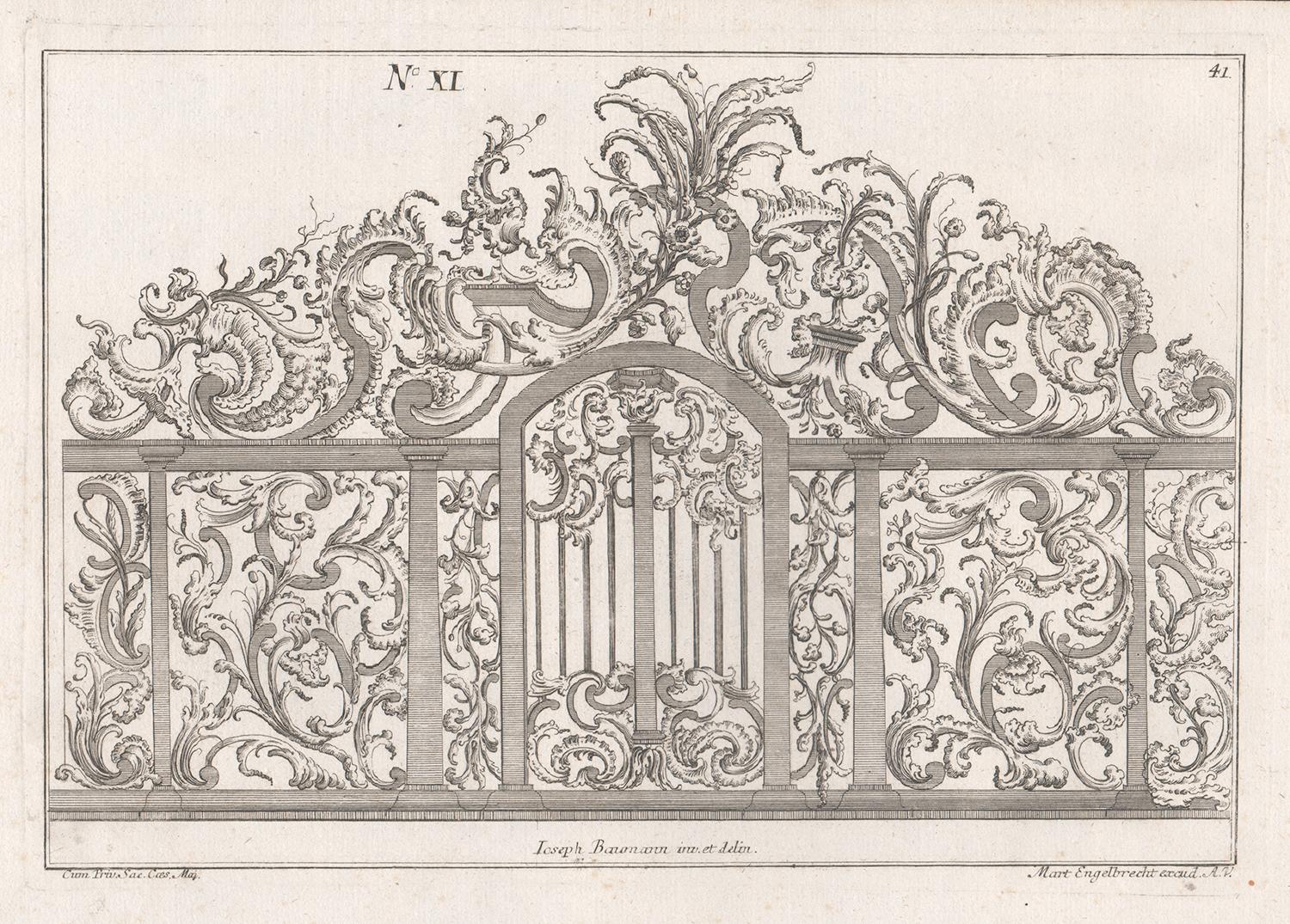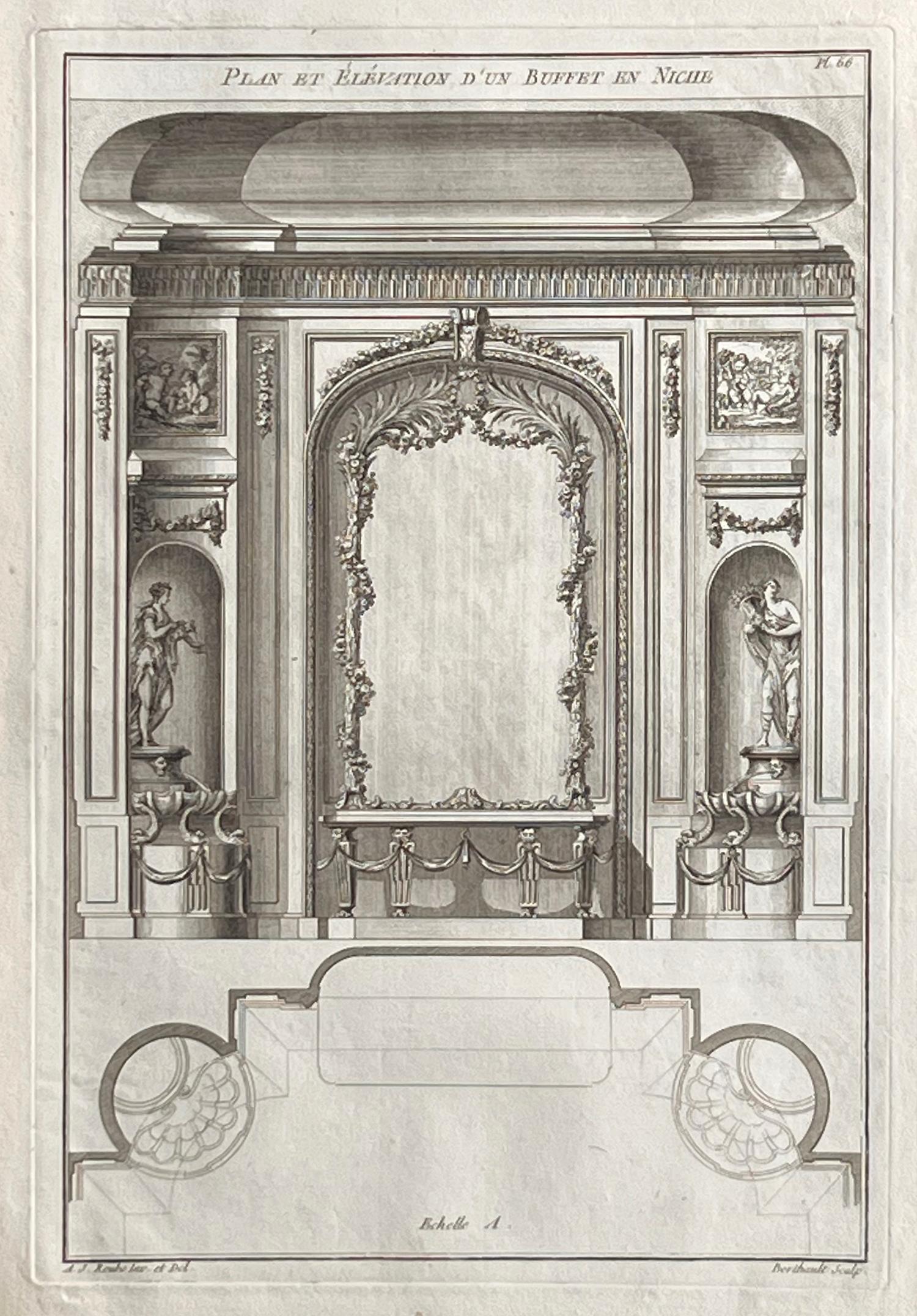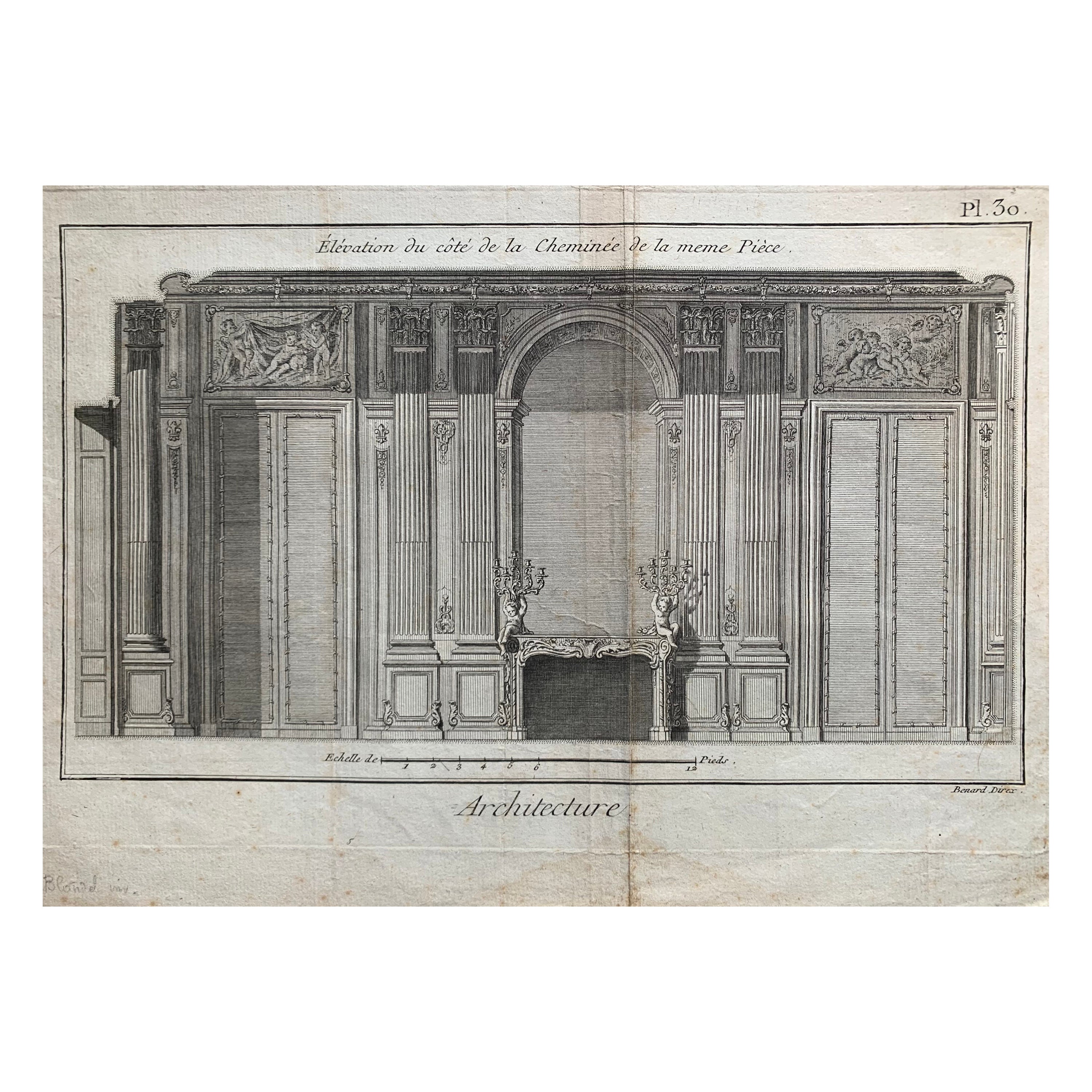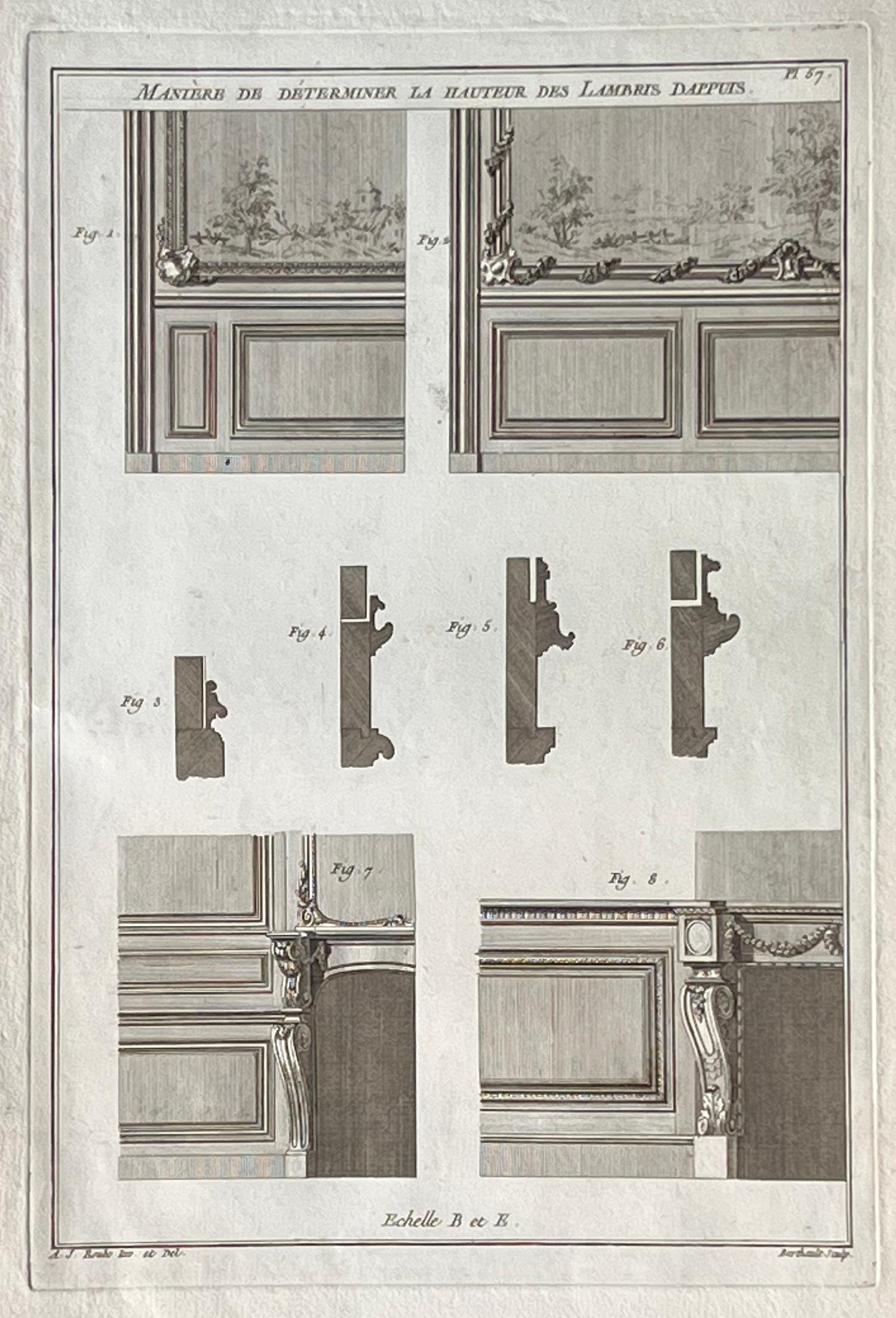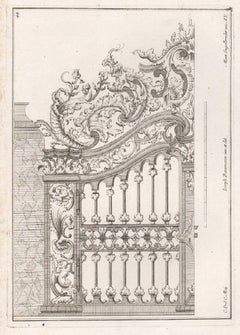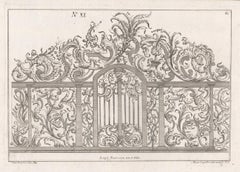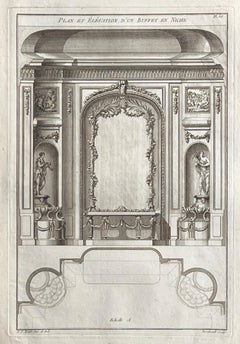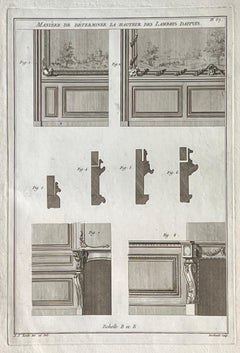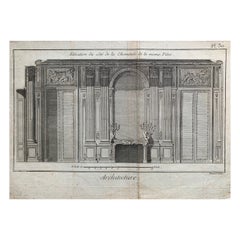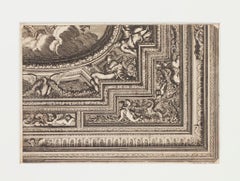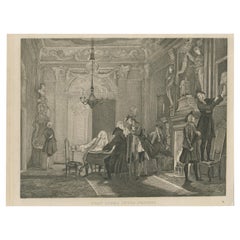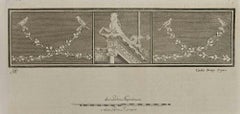Items Similar to Rococo interior design and furniture, German mid 18th century etching
Want more images or videos?
Request additional images or videos from the seller
1 of 3
Franz Xaver HabermannRococo interior design and furniture, German mid 18th century etching1750
1750
$165
£125.34
€144.33
CA$236.05
A$258.92
CHF 133.52
MX$3,092.58
NOK 1,693.40
SEK 1,588.60
DKK 1,078.60
About the Item
Rococo interior design and furniture, etching, by Franz Xaver Habermann (1721-1796), circa 1750.
Lettered 'F. X. Haberman, inv. et del. loh. Georg Hertel, excud : Aug. Vind., numbered with publisher's series number and numbered '4'.
Published by Johann Georg Hertel (1719-1768) in Augsburg.
Similar works are held in the Victoria and Albert Museum, London.
190mm by 300mm (platemark)
230mm by 370mm (sheet)
- Creator:Franz Xaver Habermann (1721 - 1796)
- Creation Year:1750
- Dimensions:Height: 9.06 in (23 cm)Width: 14.57 in (37 cm)
- Medium:
- Movement & Style:
- Period:
- Condition:Faint toning in outer margins, esp right hand margin. Stitching holes along bottom edge of the sheet.
- Gallery Location:Melbourne, AU
- Reference Number:Seller: BT91981stDibs: LU124426665832
About the Seller
5.0
Platinum Seller
Premium sellers with a 4.7+ rating and 24-hour response times
Established in 2005
1stDibs seller since 2019
617 sales on 1stDibs
Typical response time: 3 hours
- ShippingRetrieving quote...Shipping from: Melbourne, Australia
- Return Policy
Authenticity Guarantee
In the unlikely event there’s an issue with an item’s authenticity, contact us within 1 year for a full refund. DetailsMoney-Back Guarantee
If your item is not as described, is damaged in transit, or does not arrive, contact us within 7 days for a full refund. Details24-Hour Cancellation
You have a 24-hour grace period in which to reconsider your purchase, with no questions asked.Vetted Professional Sellers
Our world-class sellers must adhere to strict standards for service and quality, maintaining the integrity of our listings.Price-Match Guarantee
If you find that a seller listed the same item for a lower price elsewhere, we’ll match it.Trusted Global Delivery
Our best-in-class carrier network provides specialized shipping options worldwide, including custom delivery.More From This Seller
View AllRococo design for a gate, German mid 18th century etching
By Joseph Baumann
Located in Melbourne, Victoria
Rococo design for a gate, etching, by Joseph Baumann (active 1740-1760), circa 1750.
Published by Martin Engelbrecht (1684–1756).
Similar works ar...
Category
Mid-18th Century Rococo Interior Prints
Materials
Engraving, Etching
Rococo design for a gate, German mid 18th century etching
By Joseph Baumann
Located in Melbourne, Victoria
Rococo design for a gate, etching, by Joseph Baumann (active 1740-1760), circa 1750.
Published by Martin Engelbrecht (1684–1756).
Similar works ar...
Category
Mid-18th Century Rococo Interior Prints
Materials
Engraving, Etching
Plan et Elevation d'un Buffet en Niche, Roubo French design engraving
Located in Melbourne, Victoria
'Plan et Elevation d'un Buffet en Niche'
French copper-line engraving by Berthault after Andre Jacob Roubo (1739–1791). 18th century laid watermarked paper.
From Roubo's 'L'Art du ...
Category
Late 18th Century French School Interior Prints
Materials
Engraving
Maniere de Determiner La Hauteur, Roubo French cabinetmaking design engraving
Located in Melbourne, Victoria
'Maniere de Determiner La Hauteur Des Lambris Dappuis'
French copper-line engraving by Berthault after Andre Jacob Roubo (1739–1791). 18th century laid watermarked paper.
From Roub...
Category
Late 18th Century French School Interior Prints
Materials
Engraving
French Neoclassical Design Engraving for Braziers
Located in Melbourne, Victoria
Copper-line engraving. C1768.
Delafosse was a French decorative designer, engraver and architect. Apprenticed for a time to a sculptor, by 1767 he styled himself an 'architect and professor of design'. He published the first volume of his most important work, 'Nouvelle Iconologie Historique' in 1768, containing 110 plates of his designs for furniture, decorative arts and architectural...
Category
Late 18th Century French School Interior Prints
Materials
Engraving
French pipe organ design, late 18th century engraving
Located in Melbourne, Victoria
'Elevation Geometralle d'Un Buffet D'Orgue d'Une Nouvelle Decoration'
Copper-line engraving. C1770.
380mm by 420mm (platemark) 460mm by 560mm (sheet)
From Roubo's 'L'Art du Menui...
Category
Late 18th Century Rococo Landscape Prints
Materials
Engraving
You May Also Like
Jacques Renaud Bernard, Set of 5 Engraving of Architecture, 18th Century
Located in Beuzevillette, FR
Beautiful set of 5 engravings by Jacques Renaud Bernard representing the parade hall and the apartments of the Duchess of Orleans at the Royal Palace in Paris, architectural ensemble designed by the architect of Louis XV Pierre Contant D'Ivry. The engravings represent the architectural details of the different rooms (moldings, sculptures, furniture etc.) This set of engravings...
Category
Antique Late 18th Century French Louis XVI Picture Frames
Materials
Paper
Rospigliosi Palace - Etching - Early 20th century
Located in Roma, IT
Rospigliosi Palace is an original artwork realized by an anonymous artist..
Original print in etching technique.
good condition except for some small cutaways on margins.
This art...
Category
Mid-20th Century Modern Interior Prints
Materials
Etching
Etching on Chine Collé After the Painting by Cornelis Troost, ca.1850
Located in Langweer, NL
Antique print titled 'Erat Sermo Inter Fratres'.
Etching on chine collé after the painting by Cornelis Troost. It shows a Dutch interior with a gro...
Category
Antique 1850s Prints
Materials
Paper
$313 Sale Price
20% Off
Ancient Decoration From Antiquities Of Hercolaneum - Etching - 18th Century
Located in Roma, IT
Ancient Roman Fresco from the series "Antiquities of Herculaneum", is an etching on paper realized by Carlo Oratij in the 18th Century.
Signed on the plate.
Good conditions.
...
Category
Late 18th Century Old Masters Figurative Prints
Materials
Etching
Chandelier designs. A pair of engravings
By Albertolli Giacondo
Located in Paris, FR
Chandelier designs. A pair of architectural engravings.
These engravings are framed in white gold covered french frames.
From the publication published in Milan in 1782.
"Different o...
Category
1780s Interior Prints
Materials
Engraving
Pl. 89 Antique Print of European 17th Century Furniture by Racinet, circa 1880
Located in Langweer, NL
Antique print titled 'Europa XVIIth Cent - Europe XVIIe Siecle - Europa XVIItes Jahr'. Chromolithograph of European 17th century furniture . Th...
Category
Antique Late 19th Century Prints
Materials
Paper
$95 Sale Price
20% Off
More Ways To Browse
Used Furniture Germany
Rococo Antique Furniture Rococo Antique Furniture
Antique Interior Design
18th Century German Rococo
Art Bra
Art Plexi Box
Belmont Park
Birds Of A Feather
Chinese Rice Paper Painting
Climbing Sculptures
Cone Sculpture
Dinosaur Art
Folk Art Texas
Kaws New York
Metal Leaf Used In Art
Oil On Velvet
Russian Man
Steamship Paintings
